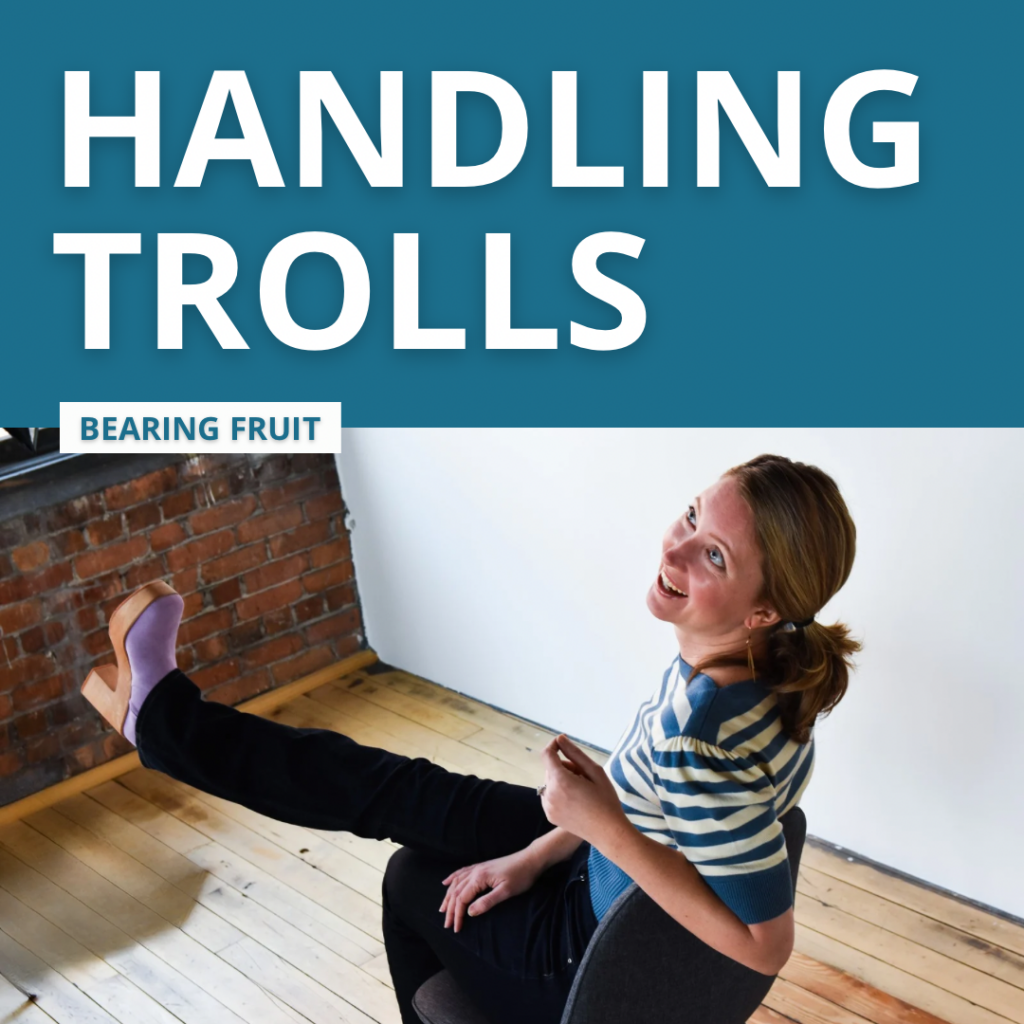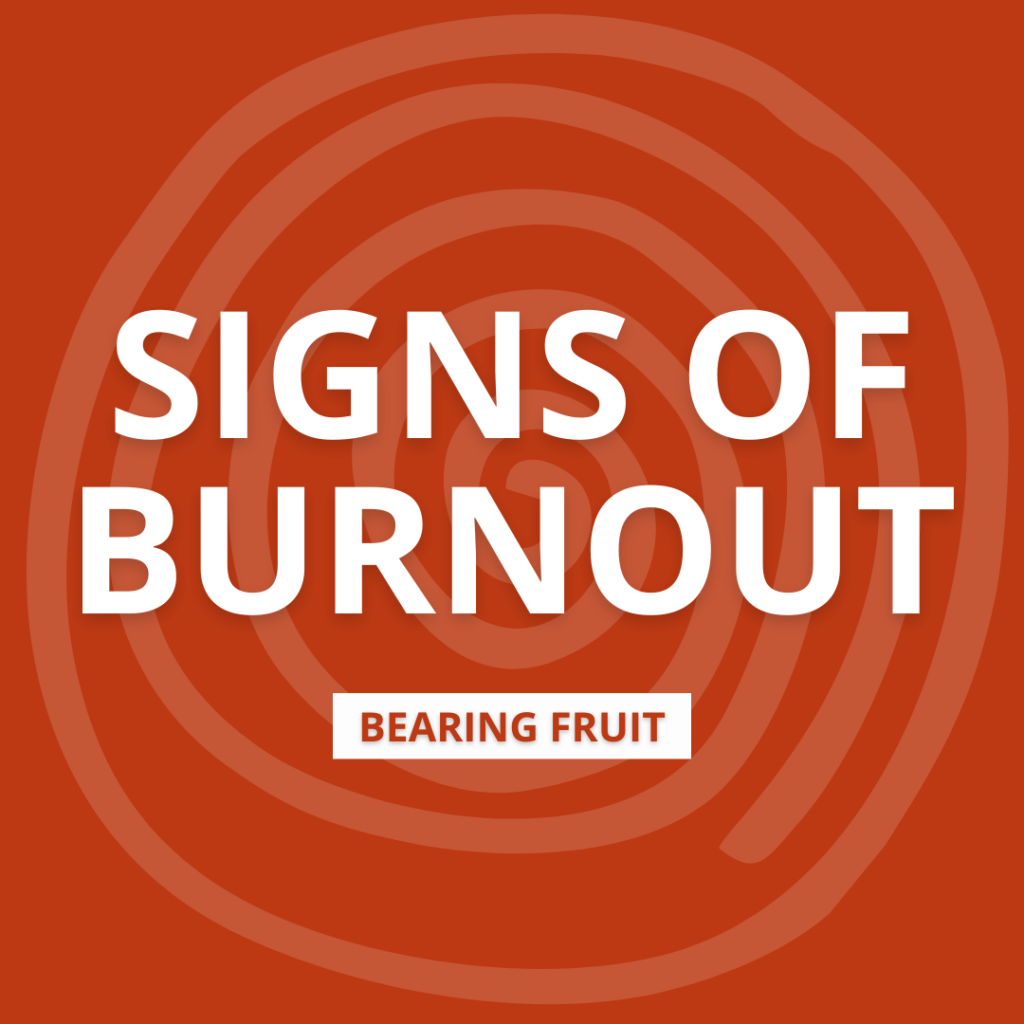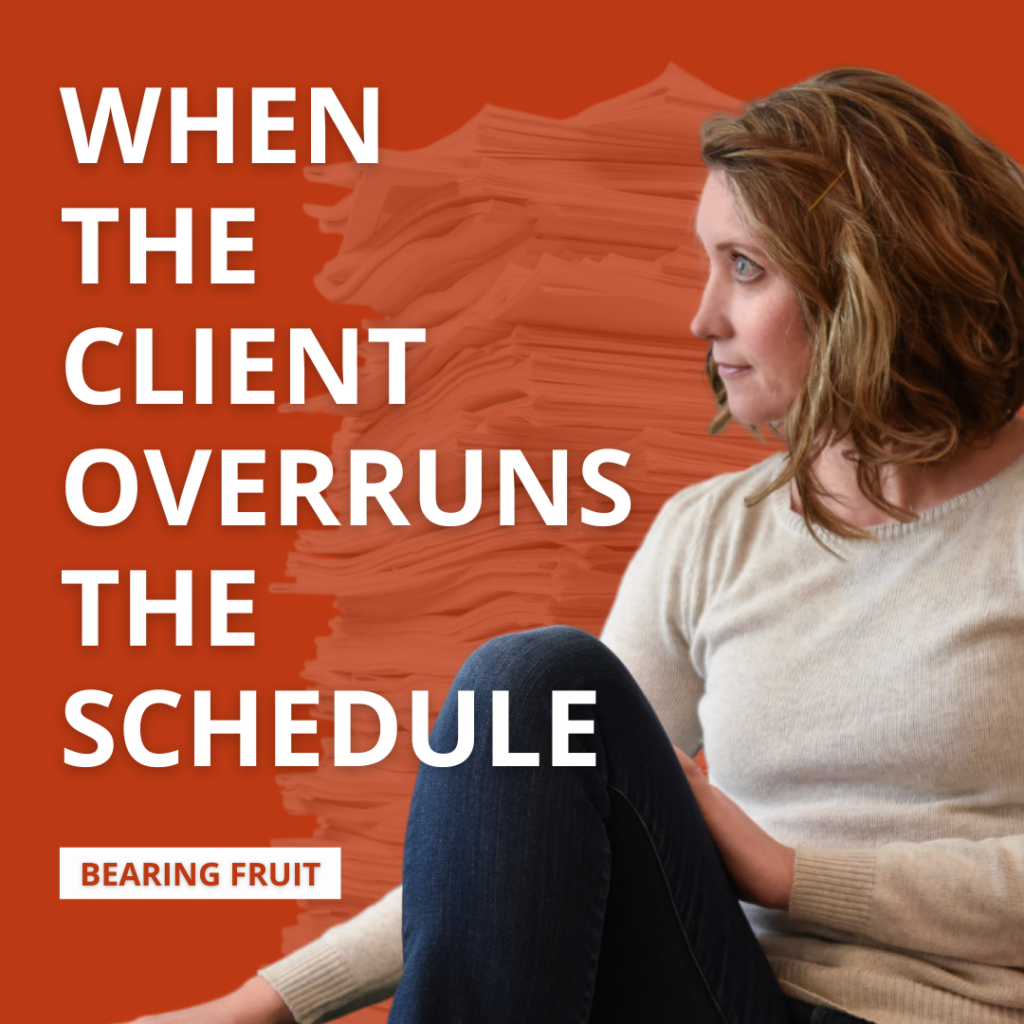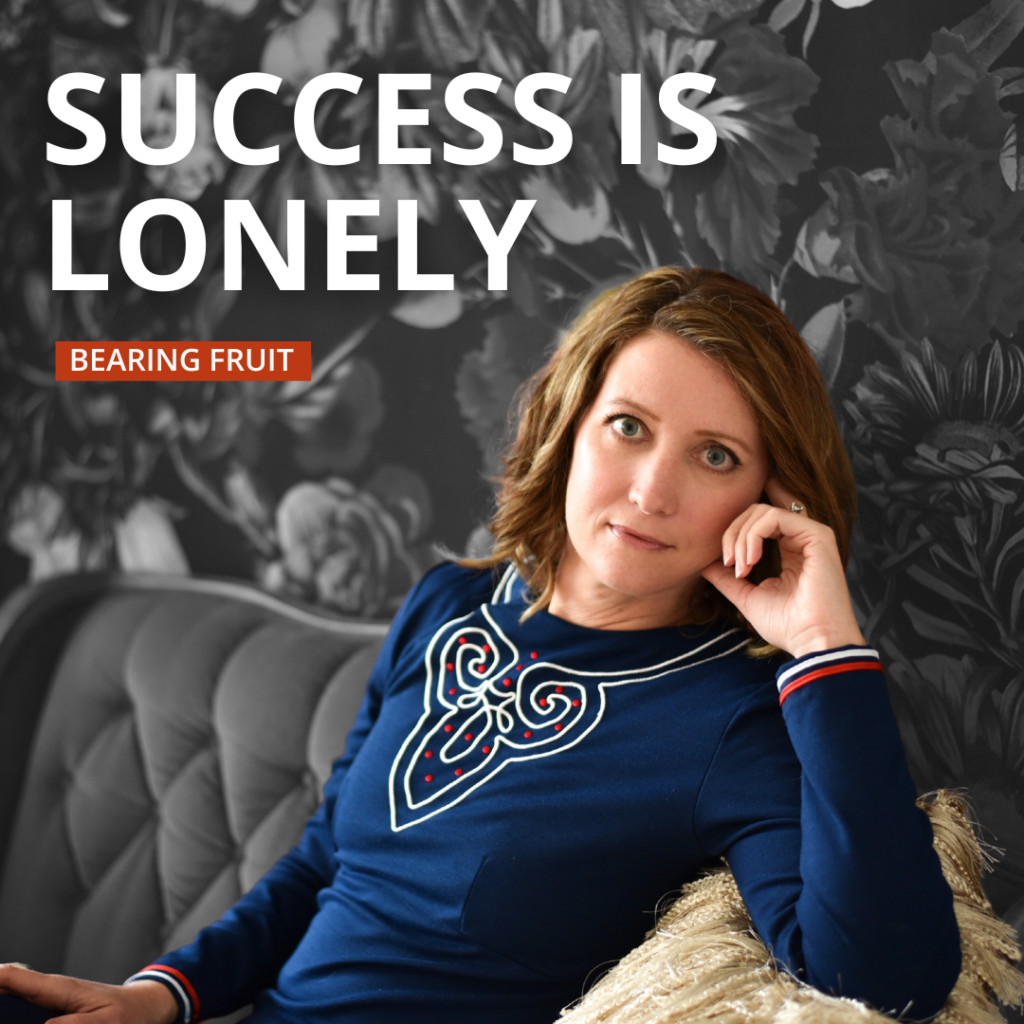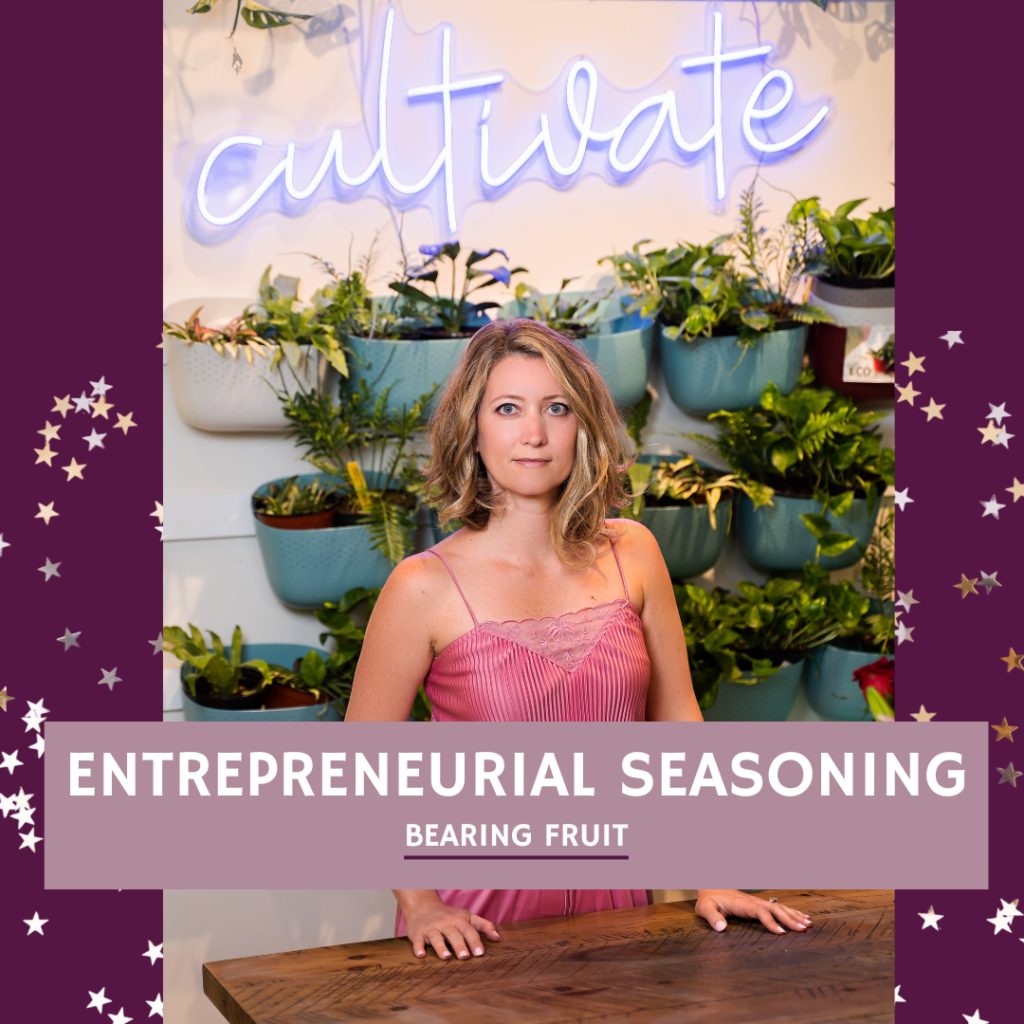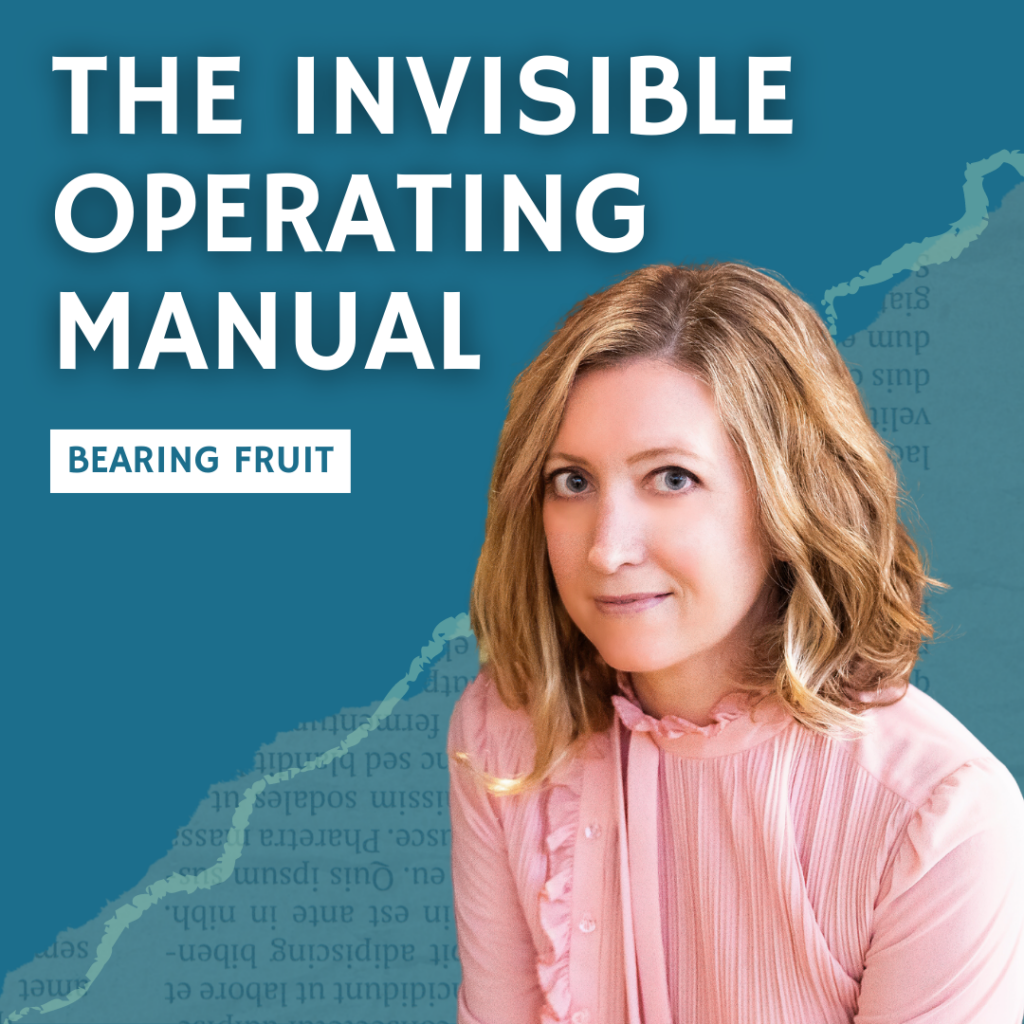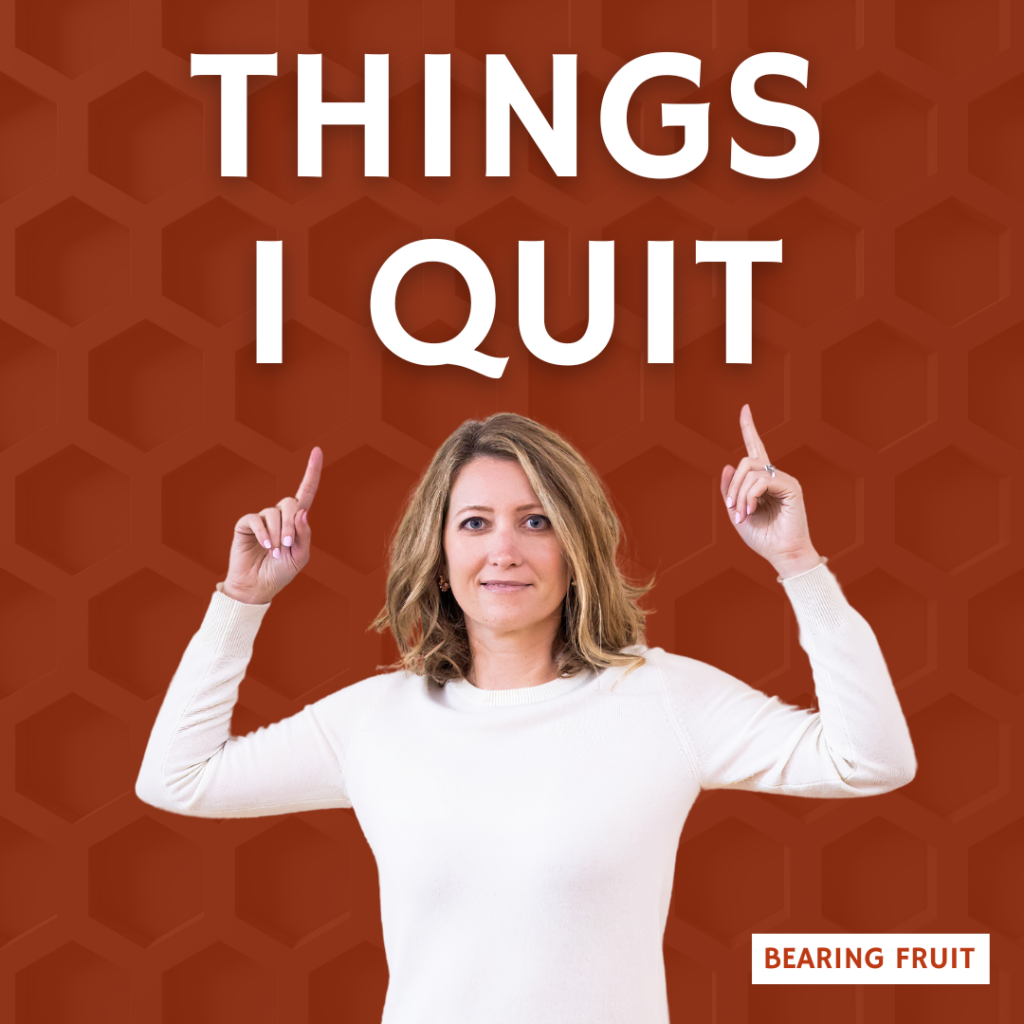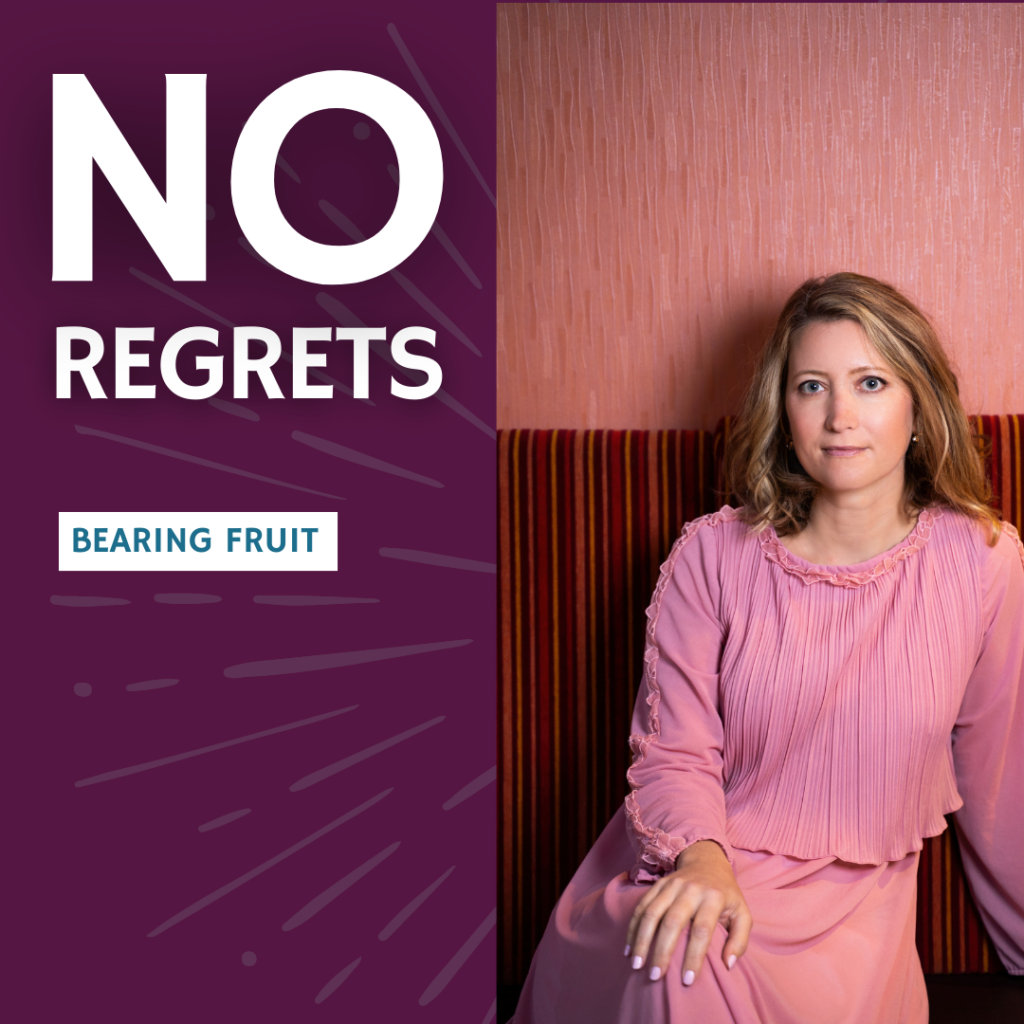A Day in the Life
Since “How are you so productive?” comes up so often, I’m gonna answer in this post. It’s due to massive time management and privilege.
So here’s the brutal honest truth about what my days look like.
But please hear me: A tight morning routine doesn’t make you a genius. Copying the morning routine of a Fortune 500 CEO is foolish. You have to figure out what works for you and that’s gonna be an ongoing process.
Early Morning
I used to wake up and jump onto my computer, before breakfast even, responding to emails that came in while I slept until my inbox was tamed.
But I was so fried and hungry at that point by all the urgency I’d created that I couldn’t do any deep thinking the rest of the day.
Midway through the pandemic, after I realized that YES I successfully replicated my favorite restaurant cocktail at home but OMG having one every day is not doing me any favors, I started prioritizing my morning time for myself. Did the pandemic make you rethink some aspects of your day-to-day too?
Now I need about 3 hours before I start work.
10 minutes of laying in bed looking at my phone, of course.
A healthy breakfast.
Time to relax with a coffee and a book.
Lots of deep stretching and physical therapy to keep the organs and muscles in the right places.
A regular meditation routine.
Plenty of opportunities to catch casual time with my teen.
Therapy.
Wordle.
Breakfast with a friend.
Volunteering.
I literally put my life before my work.
Late Morning
I front load my work hours so that the things that require my most creative energies happen first: developing new talks, inventing things, and writing.
It takes every ounce of my self control to avoid my inbox first thing. Answering email makes you feel like you’re being productive but in reality, the big stuff that will move your business ahead and really requires your brain isn’t in your inbox.
This means that when I’m in a heavy content creation period, it might take me a few days to get back to all my unread messages and I continually work on being at peace with that.
Late morning is when I produce.
I end my most productive time but listing out my next steps on the project at hand and then scheduling time in my calendar when I’ll get back to them. Which means there’s always a plan for how I’m going to use these hours.
I also schedule my virtual workshops to start mid-morning and run through mid-afternoon.

Afternoon
By 2pm my brain is spent. It takes me twice as long to write. So why even bother?
This is the time to email. Plot schemes with colleagues. Hold the rest of the webinar. Book travel.
Afternoons are my availability for meetings. I use Calendly for scheduling and set up my availability for noon-4pm, with 15 minute breaks between meetings so I’m never running from one call to the next. I can always pee. That’s self care, ya know.
This time is also scheduled, weeks in advance.
When I’m reallllllly lucky the work load and the weather will align and I’ll just leave for the afternoon. Bike rides, kayak adventures, hikes. These are good days.
Evening
Why does it take so much effort to be healthy? I don’t know about y’all but meal planning, grocery shopping, cooking, and exercise take up so. much. time.
I get around 90 minutes to relax and I wish I could tell you that I use that time to enrich myself further with a good book but usually it’s TV.
Bed by 10.
For short spells in the past, I’ve used my evenings to develop new business ideas and turn them into a reality. Weekends, too. Realistically, for me, I can only do that for a few months at a time before it burns me out.
Except Fridays
Fridays I sleep in an extra half hour and feel like such a little rebel.
No meetings. No workshops. No travel.
Fridays are for building the empire.
This is when I develop my marketing. Write my newsletters (hiiiiii!). Manage my money. And think through my big business bold moves.
It’s creativity time and that’s often best done out of the office. So I’ll talk through a business idea with a friend on a walk in the woods. Or take my nascent new workshop idea into the kayak.
Though I’ve said I have a 4-day work week, the honest truth is that my brain thinks about work during life time and plans out my life during work time and there’s probably no such thing as a work-life divide for an entrepreneur. The best I’ve come up with is this work-life integration.
Except a Travel Day
In the weeks when I’m on the road, my schedule changes dramatically. I’m up earlier. My time to relax and engage in extensive body work is massively condensed. I’m back to my old habits of answering emails over coffee while putting on alllll the makeup to get ready for a talk.
Workshop days are looooong – usually 8am until 4:30pm and then an evening of travel where, now that we have wifi on planes, I’m writing up another newsletter or answering emails at 9pm en route to my next workshop.
We overlook how much traveling to and from work IS STILL WORK.
Yes – I got to catch up with a friend for dinner when I was on the road. Afterward? Back to work.
I decided that packing and unpacking for work trips are STILL WORK so now I do that during my working hours, in my afternoons.
My Position Makes This Possible.
My kid is old enough that he needs less of my time.
I don’t have a husband that adds 7 hours of work to my week.
My parents don’t yet need my help.
The commute to my office is 15 steps.
I make enough money to afford an assistant and a cleaning service (or vice versa – they create the time for me to make more money).
The emphasis I put on my whole being keeps me sane and relaxed, which is the best scenario for your brain to be its most productive.
So how is this working for you? How have you organized your days to best fit your life? And what needs to be tweaked at some point to make your days work even better for you?
The Patriarchy Gave Us Our Ideas of Success
One of the most popular podcasts in the world aired an episode in March 2024 that *still* has me absolutely seething so buckle up, here we go.
Ever listened to Huberman Lab? The host is Andrew Huberman, who has made some very problematic life decisions that should make you question his credibility right out of the gate, is a professor and researcher at Stanford who goes into incredible detail about the research behind each of his podcast topics.
Episodes are often 2+ hours. People like that he can translate the science behind health topics with an everyday language and that’s what initially drew me to his podcast as well. He provides seemingly science-backed protocols for sleep, nutrition, relationships, etc. He tracks his personal data.
You know this type of bro.
Back in March 2024 he hosted Cal Newport, a well-published author who writes about being low-tech or no-tech, productivity, and how we need to slow down to be most effective.
Huberman interrogates Newport about whether Newport lets his three children have phones. Newport says absolutely not, but they’re too young to need phones anyway. Put a pin in this point in the conversation.
Later in the podcast, Huberman asks Newport how he’s able to write so prolifically. What are your rituals that get you in that headspace? What’s your writing routine? Tell us about your desk setup.
Dear reader, this is what Newport said: He has a special writing room, where his computer is not connected to the internet. He leaves his phone out of the room, has no other internet-connected devices like a smart watch, closes the door, and writes for 4 or 5 hours at a time. Distraction-free.
Sounds lovely, right?
But who the fuck is watching the three kids?
This is when I start screaming at the podcast “Ask him about his kids! Ask him about his kids!” but of course Huberman does not. It doesn’t even register with him that the ability to ignore your phone for 5 hours at a time is a privilege only available if you have someone else caring for your children.
You can have a bibliography like Cal Newport if your wife is there to answer the call from school that your kid is puking.
You can’t be the emergency contact for your mom, your son, your best friend, or even your wife cause they all know you ain’t gonna pick up the phone.
So, as forward-thinking as Newport claims to be, he is entirely reliant on a patriarchal system to support his career (whether that be his wife, a nanny, or a school system which is primarily staffed by women).
Newport’s wife (her name is Julia) isn’t the one getting featured on one of the world’s most popular podcasts.
When we define success the way Newport and Huberman do, we glorify the rapid accumulation of individualistic outputs (the number of books authored, the number of podcasts produced) that are only possible on the backs of unpaid or underpaid mostly female labor.
I would rather be my child’s first call when he’s in trouble and have it take twice as long for me to write that book.
The danger is that if we let Huberman and Newport serve as definitions of success in the world without considerable critical questioning, we come to believe that we have to strive for the same. Because that’s what success looks like, we’re told.
We desperately need more models of success – the kind that places value on our joy and our interrelationships. The kind that leaves us space to pick our kids up from school. Throw a friend a birthday party. Listen deeply to the stories of our aging parents.
I’m trying to do this at Evergreen Empire. I’m trying to show you that you can make work that changes the world while also living a big meaningful life that isn’t defined by the way you earn a paycheck.
When someone asks you “what do you do for a living?” I want your answers to be about l-i-v-i-n-g, not just your job.
You’re bigger than that.
Summer Play List
I think about you all the time and how much you’d love this podcast I’m listening to, this book I’m reading, this sunny day.
So as we wrap this season of the Bearing Fruit newsletter and slow down for the summer, I’m sending you this compilation of thoughtful food for your heart and soul.
I actually do intend to keep this light but my first recommendation is this podcast episode from The Money with Katie Show. Money is so emotional. Or rather, our associations with money are emotional and personal and touchy AF.
Entrepreneurs who care can struggle to be ok with making money and charging what their worth. If that’s you, it’s healthy to examine where that’s coming from and this episode will help.
This episode of the We Can Do Hard Things podcast reminded me of this article I wrote about burn out. So, some of the root causes they discuss may be topics you’ve heard before but they’ve dig into actual, real, tangible solutions.
Meditation alone sure won’t fix the world but knowing how to regulate your emotions by getting in touch with your own inner calm will seriously improve your day-to-day. There’s no one better at guiding you through that journey than Tara Brach.
Though you definitely can’t feel great all day every day, I’m a big fan of engineering my time to set me up for the most success. And I’m a data nerd. I think you are, too. So you’ll dig this episode of The Happiness Lab, which has do-able, easily implementable, and somewhat surprising strategies backed by research.
This episode of Hidden Brain features someone who researches successful entrepreneurs. When you work backwards from the success cases to see what they have in common, it’s illuminating. And it’s contrary to what we’ve often been told. And it aligns with how I’ve birthed my business too.
Jenny Odell’s book, How to Do Nothing, will change your life if you let it. It’s a beautiful exploration of what makes life worth living. We need this more so now that bots and AI are making it difficult to know what’s real anymore. Though many others have written about the attention economy is the style of a logical argument, Jenny Odell is an artist in real life so this prose is almost poetic.
I’ve gifted this book to several friends, it’s that good.

Lastly (for now), I hope your summer has moments where you aren’t trying to learn a new skill or fix your business. I hope you have plenty of time to just dance with some joy in your heart. To that end, here’s what’s making me get up, shake my tail, and sing real loud. My Summer Play List.
Have fun. Go play.
Handling Trolls
Fresh entrepreneurs often shy away from social media for one of two reasons:
1. Worry that they don’t have anything post-worthy to say
2. Fear of trolls
These two concerns are actually inherently intertwined.
Because when you get your first troll, it’s a sign you really had something post-worthy!
Congratulations! 🪇
Let me explain.
When you begin posting on social media, you’ll probably take baby steps. You’ll post about a win at work, a client you love, a project that just wrapped.
And your audience will mostly be composed of friends and colleagues who will heart the shit out of anything you post because we love you and we’re cheering you on.
Which means you aren’t getting a lot of reach with your posts beyond your usual suspects. Your social media isn’t yet reaching new audiences who could ultimately convert into buyers.
Your first troll indicates that your posts have gained some ground. They’re getting out to people who don’t know you and don’t auto-adore you. THIS IS A GOOD THING.
So stop hyperventilating into a paper bag and pat yourself on the back. Send me a link to your trolls comment and we can celebrate together.
Then we take action.
You have three possible options.
Ignore.
It’s going to feel like this dude’s trolly reply is being painted on the moon for the whole world to see. It’s going to feel like you’re walking around town with this reply stapled to your forehead.
But the reality is that (for better or worse) very few people are going to see your post, let alone his reply.
And (again, for better or worse) social media has a very short attention span so those who do see it are going to forget about it real soon.
One option is to starve the troll of attention so it fades fast.
Delete and block.
My old thinking was that if I’m posting every day and a troll drops a comment on something I posted two weeks ago, I’d ignore it. But now I don’t ignore as much as I used to.
In part, because I doubt that this person’s rude comment is the one and only time they’ve ever posted something like this. I realized, this troll is probably being a jerk all over social media. My mama bear came out – I wanted to protect others.
So I started to block. I wanted a formal method to communicate to the social media platforms that we’ve got a troll in our midst. Blocking also prevents the person from seeing your account or commenting.
And, I’ll delete the comment. Don’t let it go unaddressed, just sitting there. Especially if your post is fresh and you’re getting other helpful and supportive comments.
Though the algorithms hate deleting. The algorithms want engagement. So you could just eat the cost of deleting or…
Reply with joyful snark.
(my personal favorite approach)
Some of my past replies:
“you seem like you’re fun at parties.”
“It looks like you didn’t get the memo that we left trolling over on Twitter.”
“Jesus Christ STFU Todd.”
“The angsty reply guy vibe doesn’t work here.”
“You, sir, seem like you need a nap.”
Though it might seem like this is just poking the bear, I’ve never had a troll respond. Which makes me think these are scared little dudes who want to puff their chests at people they think will cower in the corner but as soon as they see you aren’t gonna cower, they run away.
Should you ever try a joyful snarky response and they actually clap back, come let me know and I will mama bear all over that mofo, ok?
You Can Turn Off The Comments
It’s your blog. Your social media. You get to choose the rules.
Early in my days of content creation, I totally didn’t understand that I was in charge. My blog platform contained a comments feature that was turned on by default and I didn’t even question it.
Nor did I need to, at first. I was posting every couple weeks and you wanna know how many comments I got?
Zero.
I was praying for comments. Someone, please, let me know you’re out there.
It took a few months, but they came. Here’s the first, from someone who is still a good friend, Stuart Henderson, regarding an early checklist for reports that I published.

Feels good, right? In fact, most of those early people have become dear to me. Most comments were sweet and supportive.
Until they weren’t.
The first negative comment made my knees shake. Sweat immediately poured from my armpits. My face got hot, my brain felt dizzy, and I thought I was gonna puke.
That negative comment rolled around in my brain, obsessively, for at least three days.
I’d post it for you here but I think I deleted it. 😶 In fact, I’m pretty sure I deleted my entire post. Let’s just act like that never happened.
But after another few months, it happened again. While I hyperventilated into a paper bag, even more replies posted, in which people started arguing with each other AND me. Big names in the data viz world tapped in to the fight:

I blurred out most of it because the actual content isn’t relevant but LOOK AT THE LENGTH OF THE REPLY.
This forced to the surface a very valid question: Does posting also make you responsible for hosting a public debate about your ideas?
Is there an obligation to provide a platform for negativity? Even if they have a point? Even if they’re trolls?
The default mode on blogs and social media posts has always been Comments On. You enter the arena, you better be open to the good, the bad, and the ugly. The entire Internet is a forum for open commentary. Put on your boxing gloves and get out there.
But… says who? I mean, who established those rules? Tech is disproportionately white and male.
Who populates those forums and engages in those debates? At least in my comments, it’s mostly white men. And exclusively so when the comments go negative.
The model that brings them some sort of fulfillment doesn’t work for me. I have better, bigger things to do with my time than moderate Stephen vs Andy vs Jon vs Jeff vs me.
So I turned off the comments. To be clear, first I wrestled with what this means for democratic thought and transparency and oh what will these people think of me. For a few days. Then I just went into WordPress and clicked the button to turn off comments. It’s remarkably easy.
Same deal on LinkedIn. You can just turn off the comments if you want.
It’s your call. That’s the important part here: It’s your call. You get to decide how you’ll put your thoughts out there in the world.
Signs of Burnout
The surest sign of burnout is when your emotional reactions are disproportionate to the event itself.
The real work is in understanding how that disproportionate reaction manifests for you, so I’m gonna lay out some examples from my life in hopes that you can recognize yourself somewhere in here too.
Personally, when I’m burned out, my emotions become so fried and fragile that I cry at just about anything.
Another email from someone interested in booking a workshop with me? 😭 because I just can’t handle one more thing. When an appropriate, proportionate reaction would be to hit reply and politely decline.
I’ve also overate or overdrank. One glass of champagne to celebrate the launch of a new product makes sense. Three glasses is an attempt to drown your stress.
In 2020, I quit sleeping well. Getting 4 hours, max. Usually woken up by a pounding chest and drenched in sweat. I thought it was very early menopause. Or possibly a heart murmur. Turns out it was just stress. Your body disproportionately reacts on your behalf. (Other body clues: You get sick.)
Friends of mine have gone blank. They’re so overextended and exhausted that nothing really registers anymore. I get texts like “I don’t even remember the last three hours of my life.”
Like, the kids said they were hungry and you went through the motions of throwing together some mac and cheese while answering work emails while the preteen prattles on about what happened in Mythic Quest while….
A normal reaction would be overwhelm. You’d close your laptop. You’d focus your preteen on dumping the powdered cheese food product onto the noodles. A disproportionate reaction would be to fracture yourself into so many parts that you aren’t you anymore and therefore your brain doesn’t function.
Other forms of going blank: mindlessly binging TV or social media (this includes YouTube), playing solitaire on your phone for hours, not wanting to get out of bed.
Readers show me they’re burned out when they reply to my newsletter with an angry five-part essay about how wrong I am.
Hear me out – I’m definitely not always right.
But a point-by-point fiery dissertation? When someone starts multiple sentences with “In fact,” inside the same paragraph? Honey, you sound like you need a hug, a nap, and…
The only solution to burnout is to *permanently* cut back your responsibilities.
Some ideas:
Shrink your team.
Institute a 4 day work week.
Raise your rates and take fewer projects.
Drastically shift the distribution of household labor.
Pick a date that will be your final day at your salaried job.
For sure:
Burnout can’t be solved by sending the kids to the grandparents for the weekend.
A vacation in the Caribbean sun will be nice but it isn’t a cure because as soon as you get back on Monday you’ll be stepping directly into all the burnout-inducing chaos once again.
Tools to regulate your nervous system, like yoga and meditation, can help you bear the current stack of (too many) responsibilities but they don’t fundamentally change your circumstances.
Do you see yourself in here anywhere? What are your burnout signs? How long have you been experiencing them? What permanent changes are in store? Tell me.
To What End?
The best guidance my therapist ever gave me was through posing this question: To what end?
I musta been on a typical complaint about being stressed from work. Work I love. Work I made, since I started my own company. But still. So much of it.
She asked: To what end? Why are you working so much?
Me: So that I can save the world and help people and make a bunch of money along the way.
Her: To what end?
See, the world will never be “saved.” At least not by me. Not in this lifetime.
The number of people I could potentially help is well beyond my capacity, even if I grew a staff of 10,000. I’ll never be able to help them all.
And the money? You know it’ll only take you so far.
So… what’s the end game?
Up until that point, my loosely-defined goal was “as much as possible.” Let’s aim for infinity and make the journey fun.
Except that’s not reality. When you’re doing this:
It doesn’t matter if the chocolates are worlds to save, lives to improve, or dollars in your bank account, you get sick. It’s gross.
This is how you burnout.
“To what end?” forced me to think about a better defined business goal. Because your goal ultimately shapes your day-to-day.
Thoughtful small businesses usually have one of three major end goals:
Sell.
In this model, you’ll ultimately plan to sell your company and its intellectual property to someone else. If you’re running for this goal, you’ll likely focus on creating processes you can patent, you’ll trademark things, you’ll strive to product-ize your work.
The more systems you create, the faster someone else can step in and pick up right where you left off. And the easier it will be to get a valuation and enter into buy out talks.
Your day-to-day includes innovating new things and making them replicable and marketable. You might have staff implementing your established processes, but it’s also likely that you have a lot of folks in research and development, testing new patentable ideas.
Think of any tech start up on the West Coast and you’ve probably got a company with a Sell goal.
Though my financial planner has been pressing me to think of selling upon retirement, I’ve never considered that to be my goal for Evergreen Data.
Legacy.
Entrepreneurs focused on making a legacy will spend more of their time building a reputation.
That could look like heavy engagement in thought leadership or book writing. Sure, some thing might get trademarked in the process but that thing is inherently tied to its inventor.
Or it could be more like focusing on an extremely high quality deliverable that makes you incredibly attractive and memorable.
For example, I’m thinking of a dear elder in my family who started an architectural and engineering firm that he named after himself – Byce and Associates. He trained an expert staff and eventually sold the company (Sell!) but the new owners kept the same name because the legacy and reputation were so strong.
Think about your field – those big names are probably in this Legacy category.
Lifestyle.
People running Lifestyle businesses aim to work enough to support their desired lifestyle and no more. Your workload is naturally capped by your personal ambitions.
Lifestyle entrepreneurs tend to see more balance in their day-to-day. They don’t as often work a whole weekend writing another journal article – they’re more likely to be planning their next vacation or working in their garden.
They’re still running a business of course so they’ll still have some thought leadership and some staff perhaps but scaling to a team of dozens isn’t important. They don’t feel a need to leave their mark on their industry. They want to do important work and then go to Greece.
The accountant who earns all the income he needs in the first four months of the year and then closes shop to live his life for the other 8 – that’s a Lifestyle business.
So, to what end?
These are the three primary end goals I see. Each one naturally manifests in a very different daily practice. When my therapist asked me “to what end?” I didn’t know how to answer her and that’s likely because I was trying to do all of these at the same time. It was exhausting me.
These end goals aren’t mutually exclusive, they’re more like the three corners of a triangle. You can be anywhere in between. I personally go back-and-forth between them in different seasons of my life.
Where do you think you are right now?
When the Client Overruns the Schedule
Are we all in on the farce?
When you’re proposing a project and the prospective client wants deliverables attached to deadlines, does everyone know it’s pretty much bullshit?
I’m picking dates out of the clear blue sky. They’re as fictional as what the Jetsons thought the future looked like.
Because 95% of projects do not go according to plan. How could they? There are just so many unknowns.
Well, to be honest, the one thing I do know for sure is that the client will not get me feedback on the draft deliverables in a timely manner. It doesn’t matter who they are or how much I like them or how good the intentions are or how much we all want the project to succeed.
It just doesn’t happen.
I shouldn’t be so hyperbolic. I do get timely feedback once in a while – and it invariably comes with requests to undo things they previously asked me to do.
Either way, we will not meet the deadline.
Early Founder Stephanie was such a people pleaser that I’d let clients trample my boundaries and timelines and mental health. Old Me would have pulled some late nights and early mornings turning these large requests into miracles before the deadline.
Which we all knew was arbitrary in the first place.
How can we handle a schedule overrun while also maintaining our sanity?
When this happened last year, my team and I could see a schedule overrun early on.
Red Flag: If your project involves data collection. Even if that’s just a matter of scraping existing data from online sources. You will overrun the schedule.
Communicate early. I began telling the client “I need x by y date in order to stay on track for this project.”
Communicate often. Though they said they understood, they also blew past the dates I had put in place. Every single time. I changed my messaging to “We’ll do our best to get as far as possible in the time we have but I’m giving you a heads up right now that it’s likely we won’t make the deadline we stated in the contract.” I said a version of that so many times that it came as no surprise when the deadline was in the rearview mirror.
Then a wrecking ball hit our timeline: My point-of-contact took a new job. We switched horses mid-stream. New horse asked for us to undo things the last horse asked us to do. This set us back a month. My first two strategies to prevent an overrun were moot.
Communicate clearly. This is the point where my team and I could see that deadline was gonna crash into deadline and the whole project would spill over past the contract’s end date.
Option A was to stress out my team with demands to push harder and just make it happen. But who wants to live that life??
Option B was to work with the client to extend the end date on the contract and overlap the end of this project with the start of new projects we had on the horizon. In some cases, my team had, months earlier when the sky was bluer, told other clients they couldn’t begin work until another project (this one) ended and had promised start dates that were now looming. Extending this end date would still create a stressful scramble.
Ok there may be 23 more options but I chose Option C, which was “It’s no one’s fault in particular but we are unfortunately so far behind the schedule at this point that we won’t make our contract’s end date. My team and I have obligated time in our schedules through the end of the original contract period and we won’t be available after that date. We can work together to hand off the project to you to wrap up. If you still need our input, we can consult on an hourly basis starting in October.”
I mustered up my courage, did 10 jumping jacks, and hit send on that message.
They understood. They appreciated the plan for a hand-off. And they asked for an hourly contract to start in October.
Or, at least, that’s what the email said. For all I know, they were cursing my name back at their office. And it was that reaction I was actually afraid of. I didn’t want to make my clients mad at me.
Remnants of that old People Pleasing Stephanie were still kicking around.
The rational part of me knew that the clients were the ones who ignored the timeline. This wasn’t on me or my team. Yet that logic couldn’t quiet the fear of someone being mad at me. You can’t logic an emotion.
You know what worked?
When I realized that the choice was between taking the risk that my clients would be at me and being absolutely sure I would be mad at myself for allowing a stressful work culture that required multiple all nighters to make up for other people’s errors.
I’m still people pleasing. I’m just counting me and my team as people, too.
Success is Lonely
Work was collaborative when I started my solo career. I co-launched products and co-presented. When I was in town, people invited me to grab coffee or beer. “Big names” in the field promoted my work.
Until my profile started to rise.
Until I started to have more influence than some of those “big names.” It’s amazing how quickly some dudes go from “I’m a feminist, look at the women I support” to absolute crickets as soon as you start to feel like a threat to their ego.
With other people, I guess/believe I became intimidating. Where people used to hit me up before a conference to see if we could catch a drink at the bar or to ask if I could chair their session, now I think I seem too busy or important to bother?
Whatever the reason, the result was the same:
The more success I saw, the more alone I felt.
You know what they say: It’s lonely at the top.
wah wah, #firstworldproblems, let me get out the world’s tiniest violin to play you and your privilege a sad tune, cry from your yacht
I know, I know.
But it’s still true.
And not just for me.
Check out this study of salaried employees, published in Fast Company. 55% of senior-level women said they’ve felt lonely at work in the past month.
60% of women said their sense of isolation increased as their career progressed.
And that’s among women who still go to an office and thus run into other people in similar roles. Imagine how this goes for those of us who are the solopreneur or the CEO of a small business.
My remedy came when I stopped looking for support from my field and started ganging up with other entrepreneurs. People who were sprinting down the same path as me, also building the plane as they fly it. Despite coming from different fields, our experiences are comfortingly similar.
They get me in a way no one else can.
We have conversations that are impossible with anyone else.
For example, my romantic partners have never had a social media presence (I guess my type is the “I’m not really on any platforms” guy). So while they’re willing to listen while I explain how the latest change in the Instagram algorithm is killing my posts, they have no freakin clue what I’m talking about.
My Fellow Founders get it. They share their research and workarounds. They commiserate and help me plot my next moves. We strategize.
My best friend loves me, but until she started her own company, she didn’t understand the low key pressure I just live with day to day. The thousands of tiny-but-big decisions I make on any given Monday.
Every entrepreneur needs Fellow Founders.
I’m not talking about a referral network where you ship each other business.
I’m not talking about collaborators you’ll propose projects with.
Though if those things happen along the way, extra special bonus points.
I’m talking about a group who’s sole purpose is moral, emotional, and logistical support. With zero financial profit or prestige on the line. No egos, just truth and love.
Where can you find your Fellow Founders?
You will undoubtedly make those connections with other students in Boost & Bloom. People connect in the Community Q & A or during Office Hours when they hear questions that resonate or answers that sing.
In fact, a student from my first cohort included this line in a recent check-in email (I’m keeping this anonymous because this wasn’t a formal testimonial):
“A.W. and I totally clicked on your B and B and have really supported each other in our journeys, which are quite similar.”
Two years after the course ended, we have Business Besties helping one another along.
This year, I’m adding a formal Fellow Founders program to Boost & Bloom.
As the course’s live portion comes to end, some time in May, I’ll connect you with 2 or 3 other founders. Past students can be a part of this too.
You’ll create a team name. Maybe a secret handshake that involves spit and a promise of confidentiality. And you’ll have each other’s backs as you continue to implement the plans you crafted during the course, scaling up your ethical empire.
If you want. No pressure. You can continue to go at it alone, like I did for many years.
I thought, therapy! A therapist will help me sort out these struggles. I started to see the very highest recommended therapist in town. In our first meeting she said “Oh, I’m not on social media.” She didn’t even own a computer. She could empathize on a general level but couldn’t really relate.
No one can relate like Fellow Founders.
Boost & Bloom opens again Winter 2025.
Now is the time to get on the VIP list, where you’ll get $100 off the course price.
This is where you join a space to learn everything you need to know about how to start and scale a thriving business while still keeping your heart beating.
Find out how to create a work life that aligns with your values.
Find your people.
40 Hours. Every Week?
Hey, quick question:
How the hell do people work 40 hours in a week?
Every week?
As I write this, I’ve just come from two entire weeks in Columbus Ohio, where I led a data viz workshop every single day.
I left my rental apartment at 8am and got back at 4:30pm. This is an 8.5 hour day, with a whole one-hour lunch in the middle.
So that’s 42.5 hours per week at their office. (You know I was bringing multiberry muffins to the security guard by the end of my second week.)
About 10 days into this experience, I was texting friends with the same question I’m asking you:
How the hell do people do this?
In order to be out the door by 8am, I was getting up at 6.
Taking 20 minutes to stretch, foregoing my usual yoga routine and meditation time, but just doing the basic maintenance all my freakin physical therapists tell me I have to do before my body parts fall off.
Making coffee and brekkie and packing lunch. Taking the supplements and drinking the green powder. Cleaning up the kitchen.
Putting on all the makeup and doing all the hair (aka getting on the Hot Girl Hamster Wheel, as it’s called on The Money with Katie Show).
And hustling down High St.
By the time I got back to the apartment at 4:30pm, I was famished, so I dove into dinner prep.
Running to the grocery store.
Spending perhaps an hour over the whole day connecting with friends and family.
Hitting up taekwondo twice a week.
Laundering and vacuuming.
Showering and grooming.
Sleeping 8 hours.
Totally unable to keep up with all the other emails in my inbox.
Entirely forgetting that I’m supposed to be researching a new car because the mechanic said mine could catch on fire.
Definitely not following up with the contractor on the bathroom repairs.
Barely noticing all these other Life Things that are just on hold for two weeks while I tread water, until I get back home to my way-less-than-40-hour schedule.
And that’s without having to raise small children or care for elders or even take a dog for a walk.
Come to think of it, the only time of my life when I was able to put in 40 hour weeks was when I was a young adult with no family or responsibilities.
Beyond that time, I think we all have to sacrifice something to keep afloat in a 40-hour work week world. We skimp on sleep.
We grab convenience foods and jeopardize our health because there’s literally no time to eat fresh.
We don’t have hobbies.
We skip exercise.
We don’t nurture our friendships.
We get sick a lot.
Something gives, because something’s gotta give.
I don’t see a way to live a healthy life and also work 40 hours a week. The math aint mathin.
Unless, of course, you have a partner who can manage your household and get your groceries and cook your meals and nurture your social relations. Unless, that is, you have a traditional wife.
Which were exactly the circumstances under which we got to a 40-hour work week. Our elders unionized to get working conditions DOWN to 40 hours. And that was a plausible scenario when people primarily lived in hetero households (even as they did whatever they wanted elsewhere) in which the husband worked and the wife did every fucking other thing under the sun.
In these modern times, a 40-hour work week simply isn’t sustainable.
We don’t need more articles teaching us about batch cooking.
We don’t need another podcast extoling the virtues of a treadmill desk.
Enough with the efficiency hacks showing us how to shoehorn even more around and within and in addition to the 40-hour work week.
We actually need some of that time back.
At Evergreen Data, a typical work week is 26-30 hours and that’s plenty.
40 hours is an outdated construct meant for a different society than the one we live in today.
Reason #4,325 why you need to start your own business. You set your schedule.
Then you go live your life.
Saying Yes with Ama Nyame-Mensah
Ama Nyame-Mensah DMd me with a super juicy comment: I think I have some prospective clients who are breaking the No Assholes rule.
Let me back up: Ama is a student in the first cohort of my Boost & Bloom course for entrepreneurs and she knew that my three rules (passed to me from my mentors, who had it passed to them) are: Fun, Lucrative, No Assholes.
Let me back up further: Ama runs a company named Analytics Made Accessible (handily acronymed AMA – get it?). It’s a few years old now. Ama and AMA help people explore, analyze, and communicate their data more effectively, primarily by teaching folks to create compelling charts and share data stories that matter.
A company after my own heart.
And most of the time, I see young entrepreneurs so stressed about paying the bills that they’re saying yes to everything that even remotely looks like it could contribute to cash flow, even if the prospective client is kind of a jerk.
But not Ama.
Stephanie: Ama, you’ve clearly done the internal work to know your boundaries and to be able to spot a jerk from a mile away. What exactly is on your red flag list?
Ama: I will never forget a piece of advice my sister Akua —an Executive and Leadership Coach—shared with me a couple years ago: “If you say yes to everyone, you’re always saying no to yourself.”
Stephanie: I’m reading that again.
Ama: And she’s right.
When I first launched my business, I said yes to everything and everyone. I didn’t care who I worked with as long as I got my name out there and made money—bad idea. I was saying yes to projects that weren’t a good fit and clients who didn’t respect me.
The result: I was miserable.
Hustle culture tells us that overworking and accepting mistreatment from demanding clients are necessary to achieve success. Working with difficult clients who disrespect you and your boundaries and undervalue your expertise will ruin your business and wreak havoc on your financial and mental health.
Stephanie: Give us an example of client disrespect. I’m hoping others will read this and start to recognize when it’s happening to them.
Ama: I’ll share two flavors of disrespect.
Flavor #1: Not valuing my time.
I once had a prospective client reach out to me, looking for an external evaluator for a project.
I will not lie; I initially disregarded the message and sent it to my junk mail because I thought it was spam. But curiosity got the best of me, and I responded to the email, thanking them for sharing the opportunity and setting up a time to chat about the project.
Readers, I kid you not; over two months, this individual rescheduled on me FOUR DIFFERENT TIMES (including once right as we were supposed to log into our scheduled Zoom meeting)!
And if you’re wondering, we never connected about the project.
Then, three months after not connecting with this person, I got an email “thanking” me for my interest in the consultant position (huh?) and completing and submitting documentation (I never submitted any paperwork) …BUT they had decided to proceed with another party. (I got a good laugh out of that one.)
Looking back, the biggest mistake I made was going back and forth, sending multiple Zoom links to a prospective client who was never interested in working with me.
Life happens, meetings get moved, deadlines get shifted, etc. And I cannot penalize someone simply because they’re late…once (maybe twice). But when someone repeatedly reschedules, postpones, or does not show up before becoming a client, you can guarantee they will do the same once you start working with them.
Bottom line: Don’t work with people who do not respect you or your time.
Flavor #2: Rude and unkind.
A couple of years ago, someone approached me to lead a potential project their team had been kicking around. They were attached to a cool group, so I was excited about collaborating with them. So much so that I let a lot of things slide that I shouldn’t have.
By the time I realized something was very off, I had already done several months of free work with no contract in place. But I thought: No worries; we had talked about them paying me for the work I had done to shape the project upfront after pushing the paperwork through.
Readers, that never happened.
When the paperwork was almost complete, everything fell apart. The organization spontaneously came up with a new deposit policy, which they promptly blamed on legal. And when I reached out to have a conversation with my point of contact, the conversation went horribly, horribly wrong.
What I hoped would be a moment for us to come to an understanding about my boundaries and a reiteration of what we had previously agreed to devolved into a weird conversation where they casually dropped that I should be grateful that they would even consider working with me on a project like this.
Rude much?
Remember, you are a business owner. You do a job, get paid, and the cycle continues. (That’s not to say you cannot forge long-lasting, mutually beneficial relationships with your clients.)
But some folks will make you think they are doing you a favor by working with you, even though it’s work they want (and usually need) done. Clients you partner/work with are not doing you a favor. There is no “favor” in business. People value what they pay for, and they pay for what they value.
Bottom line: Don’t work with unkind people.
And Stephanie’s bottom line: No spec work! No work before the contract!!
Now that I’ve been burned a few times, I know to look for these positive signs that someone (or an organization) will be a good partner:
- Collaborative: At the heart of any successful collaboration are communication and transparency. I am always excited by open-minded clients interested in working together to experiment and discover what works and what does not. Data + Design work is iterative, so partnering with folks open to hearing and giving feedback is key.
- Kindness: To some, respect can be bought. For example, if a client is purchasing your services, you (the consultant/entrepreneur) have to respect them while they can treat you (and their staff!) however they please. When I talk with prospective clients, I watch (and listen!) to how they interact with each other and me. People who treat others with respect and kindness are more likely to treat you with respect and kindness.
- Follow-through: Anyone can talk a good talk. But good prospective clients walk the walk. Verbal commitments are great, but they mean nothing without consistent action. This is where follow-through comes in. Follow-through is the key to creating trust in a new relationship. It lets people know you are serious and that you value their time. Follow-through at the beginning of a client relationship can be as simple as honoring meeting end times or demonstrating a commitment to a project by sharing a project description or proposed budget.
Knowing how you want to run your business, the types of clients you want to partner with, your values, and being comfortable communicating your expectations and boundaries will make you a happier entrepreneur.
What would you add to your Yes List? Tell Ama!
No Bar, No Pizza
Summer 2023 I was one of the swarms of Americans who knocked around Italy for vacation.
Venice, though beautiful, was shoulder to shoulder with tourists. It felt like being in the world’s loveliest but most popular nightclub. If there could be fire codes on sidewalks, Venice would have set off alarm bells.
That’s why No Bar, No Pizza impressed me so much.

Trattoria al Vagon is a well-regarded restaurant, right on a canal, serving traditional Venetian food. It’s the kind of place where you need a reservation for dinner.
But they’re also on a main thoroughfare with throngs of people shuffling by shoulder-to-shoulder throughout the day. If you’re thinking profitably, it would make sense to open earlier in the day. Even all day, since these tourists are jet-lagged and their stomachs don’t know what time it is.
So they compromised a smidge and extended the hours to attract the pockets of people walking by.
And then swiftly realized these tourists have no taste.
All they want is pizza and an aperol spritz at 10am.
Would you appease this clientele even further and install a pizza oven and a bar?
It would mean more capital investment.
It would also mean compromising your quality, your reputation, your ethics – that much more.
They said no.
And posted a handmade sign in large, all caps, English language letters: No Bar, No Pizza.
Don’t even come sit down and waste our staff time if that’s what you seek. There are 100 other restaurants within spitting distance that can meet you exactly where you are.
That’s called boundaries.
Every business needs boundaries – a clear delineation between what you will and won’t do.
You need them because you were likely raised to be a people pleaser so it’s engrained into your personality to bend over backwards for every person who knocks at your door, even if it causes you back pain. And exhaustion. And resentment.
Your best path forward – the path that saves you time and sanity – is the one where you get clear about your boundaries and then communicate them very early on in the process so potential customers can self-select out if their needs don’t match your services.
You need a wooden sign that says No Bar, No Pizza.
I write my boundaries down, because otherwise I’m likely to forget that I made them. That’s how I navigated through a recent situation where a potential client asked me to teach Power BI workshops for beginners, intermediates, and advanced students.
For a day I deliberated.
Then I remembered that I’d have to stretch myself to teach those workshops and they’re technically outside of my wheelhouse. I remembered my boundaries. And I referred this potential client to a colleague.
Boundaries are how I knew how to respond to a potential client who was pressing me to schedule a workshop before the end of the year, even though I’d already told them I have no availability.
Could I have found a way to squeeze them in? Sure.
But it would have hurt. There’s a reason I already put a boundary in place about no more work this year.
So, my friend, what’s a boundary you need to put in place to protect your time, energy, and mental health? Write me with your version of No Bar, No Pizza.
Entrepreneurial Seasoning
When I taught a free class on making more inclusive data visualization, I got a TON of responses that fell into one of three buckets:
- This class was AWESOME!
- I missed the class, where is the recording?
- This class was terrible, you were wrong on all these points, being exclusive with these suggestions, and neglected to mention these ideas.
It’s how I respond to the third bucket of comments that let’s me know what season I’m in with my business.
Expand or Contract Audience Season
My response, at that point in time, to the five paragraph paper of an email with bolded headings and numbered lists detailing my misgivings… was a chuckle. It’s nice that people are so passionate about such an important topic, I thought to myself.
I was in a season of wanting to expand my audience by offering new content, pushing people’s thinking, and getting comfortable being a lil controversial.
Without a doubt in my mind, I have also offered new, lightly controversial content in the past, where I got responses in all 3 buckets and my reaction to bucket 3 was fuck this shit.
I had been putting myself out there when I was in a contracting season. Good intentions, wrong timing for my spirit. All I wanted to do was scream I’m trying my best and If you don’t like it, go elsewhere – this was a FREE class.
That’s vastly different than a chuckle.
As important as it is to show up in the world with consistency, I’ve learned that I also have to watch out for changes in my seasons. Heck, I had to learn that I actually have seasons.
We all do.
Audience growth seasons are one version, but we go through others, too.
Expand or Contract Staff Season
When my staff finish a workshop and get an email like “It was truly one of the best and most practical training courses I’ve taken during my career.” it feels SOOOOoooooo good. Me and my staff just doing this at each other over in Slack:
I freakin LOVE having a team that can help me reach more people and get more good data viz out there in the world.
Teams bring a bigger impact.
You know what else teams bring? Problems.
Needs.
Management.
Which – of course! They need guidance from the boss. Makes total sense.
Despite ever better systems and procedures, from time to time I still end up being an absolute bottleneck for my business.
One option is to hire more help, like a COO, and expand even further. This is what Nina did.
It’s also perfectly ok to decide that sounds like too much work.
I’m not a great manager. I don’t even want to manage. I want to be the one in every workshop, passing out the high fives to my students. I have my seasons where I want to shrink the team and be a one-woman show.
But then I think about all the people I wouldn’t be able to help… And it’s like that, back and forth, forever.
Entrepreneurial Seasoning
You can probably identify other areas of your business where you catch seasonal feelings. Like growing or whittling the services you offer.
If you’ve only been in growth mode so far, hang on – winds will shift. That’s not a bad thing. Mary Poppins came in on a change in wind direction, after all.
Jereshia Hawk made a great point on her podcast: If you’ve only seen growth mode and your revenues have been jumping more than 30% each year, you might need to make yourself take a maintenance season.
Seasons can last months. Or hours.
It’s so tricky. So here’s what to do:
Recognize when a season is changing. You can usually tell by your reactions to common events.
Recognize that this is just a season. It won’t last forever. Take advantage of the season you’re in, while you’re there.
Do you have different seasons than the ones I listed out here? What season are you in right now? Email me – I can relate.
The Invisible Operating Manual
The Protestant work ethic is so deeply ingrained in American culture that it’s hard to even know you’re operating according to its instructions. Like the fish who doesn’t know it’s in water. Swim with me and let’s identify the fluorescent-colored rocks that have been making up our belief systems about how we work.
I’m not necessarily saying any of these Protestant traits are bad. If you’re Protestant, do you. I believe it’s incredibly helpful to understand the indicators of the Protestant mindset that have influenced our collective psyche so you can decide for yourself if these notions are helping you or getting in your way.
Work should be hard.
This is the root of no pain, no gain. If it doesn’t hurt, you’re lazy.
Hard work is part of the same United States mentality that allows people to go unhoused and unsupported; the thinking is that they should have just worked harder.
I know you’ve got a big heart so you don’t think that about the people you see on street corners with cardboard signs. But how often have you chastised yourself with that same thinking – I should have just worked harder.
Another important component to this ethic is that money should only come through blood, sweat, tears, exhaustion, sacrifice, and at the expense of your mental health and relationships. That if you make a lot of money and you’re only working 20 hours a week, you’ve cheated. Gain without pain is unethical.
But yall… look where that’s gotten us *gestures wildly at everything*.
Pay your dues.
Work your way up the ladder. Start as a junior assistant, work 80 hours a week for two years and become assistant. Two more years to senior assistant. I was sold a similar tale when I worked at the university. But then one day I realized there are 10 senior research associates all eyeing the one deputy director position, so…..
But gosh the university sure benefitted from our labor by selling us that Pay Your Dues story.
It’s this thinking that casts a side eye toward the young entrepreneur, questioning her gall and experience. As if she hasn’t put in enough hours to earn a CEO title.
Look, there’s a grain of truth here right? You do get wisdom with experience. But hours of butt in chair does not equal experience. It’s what you do with that time.
Save what’s left.
Protestant work ethic says that your job is your calling. You should dedicate all of your energy to it because, they think, this is what God wants you to do – it’s what gives your life meaning. Of course this leads to burnout.
It also means you shouldn’t engage in other activities. Like a personal life. Cause that’s outside your calling.
So if you do have some extra cash on hand, squirrel it away. Don’t invest in your rest. Don’t take a class for your personal growth. Don’t upgrade your quality of life.
Save What’s Left is also tied to the Protestant work ethic of self-denial. You come last. This explains why so many fresh entrepreneurs don’t even pay themselves.
Reward is in the afterlife.
The whole deal is predicated on this promise: You toil your tushy off because that’s how you show God you’re worthy of heaven. Whether or not you believe in heaven, a similar promise shows up in Pay Your Dues. And the whole notion of retirement.
Can I be honest? I’m a little scared of retirement. Because everyone I know who is retired 100% bought into this Protestant work ethic and as far as I can tell, it kinda sucks.
Sure you have more time to spend with the grandkids and that’s super cute. I just don’t see that many retired people who are truly, deeply happy and living the life of their dreams. They’re tired. Cause they worked 80 hour weeks and didn’t make time along the way for the things that actually create a happy life.
Is this what you want?
These ethics are the building blocks of capitalism and exploitive labor conditions. These ethics define that middle class American lifestyle that takes a vacation once every five years and has 2.5 kids. And, again, no judgies if that’s what you want.
I just want you to be aware that the definitions of success come from a very specific perspective. They aren’t universal. They definitely don’t work for everyone. And they probably have seeped into your internal narratives and it’s ok to question whether those are subscriptions you want to keep active.
Things I Quit
You’ve gotta quit in order to grow. The old model of growth by adding more and more and more is unsustainable. It leads to burnout. It’s bad for the health of the community, the planet, and you.
I didn’t totally recognize that when I first started by business. My editor asked me to write a book and I was so full of that young, I-can-do-anything energy that I said yes.
Thinking I’d just tuck it in around the edges of my life.
Getting up early, before my kid.
Staying up late, after everyone else had gone to sleep.
Taking weekend retreats in the woods to write, rewrite, and reread my own words for the bazillionth time.
It worked, but I ended up resenting that book.
Since it takes me a long time to learn from my mistakes, I wrote a second and third book using the same burnout model.
After the third book I swore I’d never write another. The process spent me.
I hadn’t adequately prepared my time and energy for that level of growth.
See, that growth did cause me to cut things – though I didn’t consciously understand it at the time. I cut time with my family and friends. I cut sleep and deep rest. I lost a summer of bike rides.
And when you cut out the things that bring you joy, you get resentment.
Seems so obvious, doesn’t it?
Yet we typically don’t face these facts and make thoughtful choices about what we’ll cut in order to make space for the incoming opportunities.
So now I know better. When I write down my quarterly or annual goals, I also write a list of the things I’ll quit so I have the room to accomplish those goals.
This drop list was from 2015:
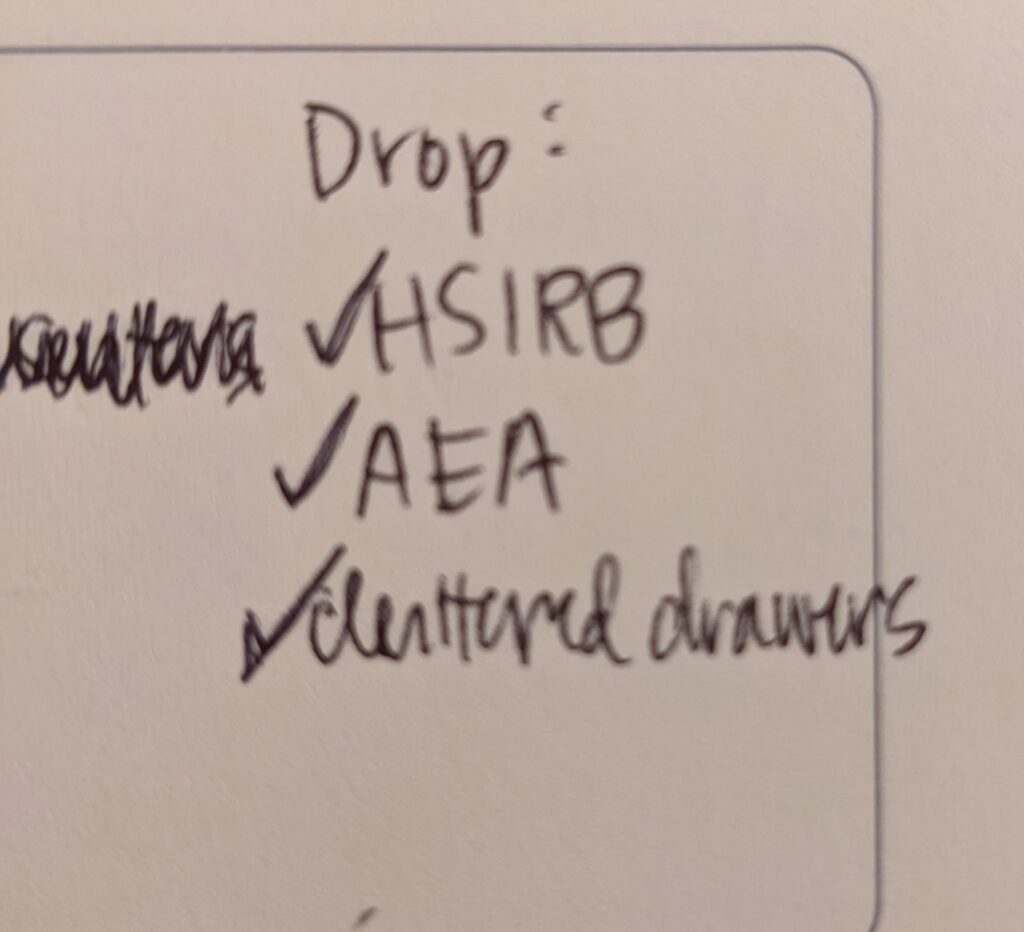
I quit my spot on the local Human Subjects Institutional Review Board (and currently have a ban on all committee work). It didn’t fit the way my career had evolved anymore.
I quit working for the American Evaluation Association, who chronically underpaid me.
And I quit having cluttered drawers because it messes with my peace of mind.
Another year, I wrote:
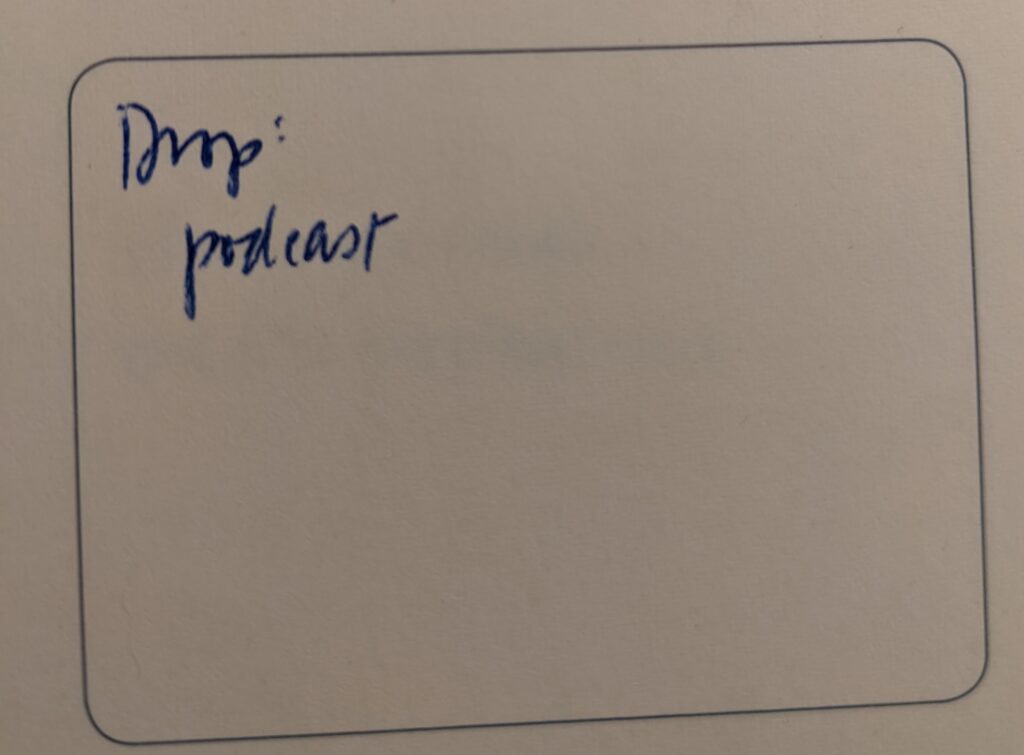
That was the only thing. I quit hosting a podcast. It took up a lot of time and the more I got to know my cohost the more my internal alarm bells were going off.
This quit list came in prep for the year I knew I’d be writing books two and three:
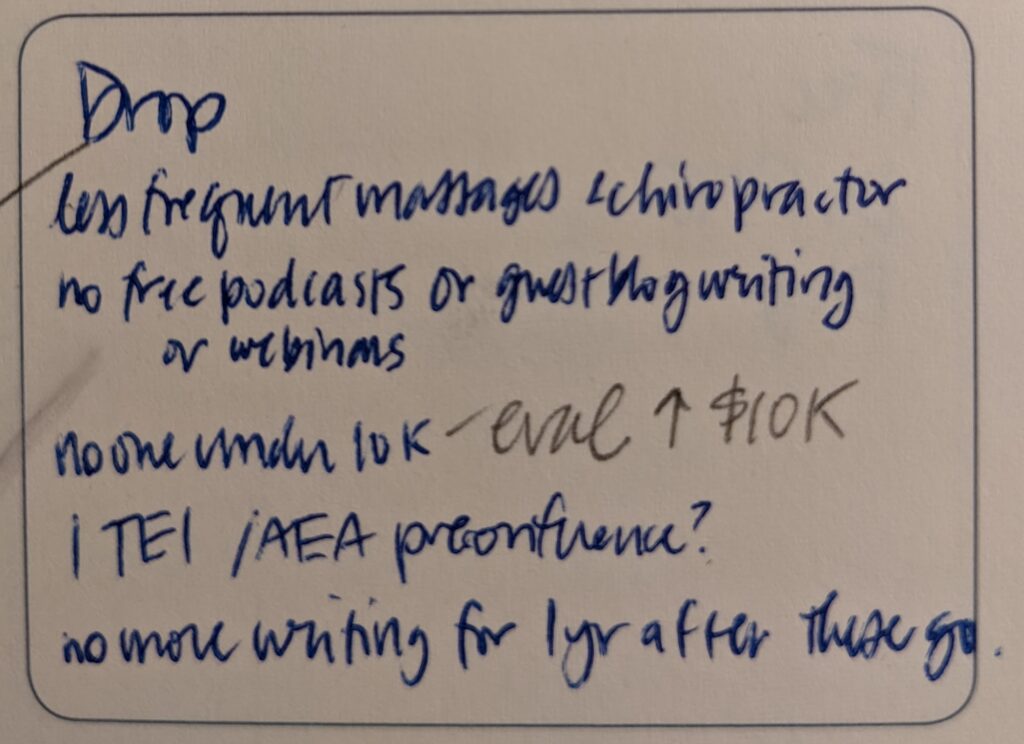
I actually said I’d quit having such frequent massages and chiropractic adjustments! What the hell was I thinking?! It takes me a while to learn from my mistakes.
I quit writing for free on other people’s blogs.
I quit working for small projects, which take just as much admin time as big projects.
I significantly cut back on holding workshops for organizations that paid me far under what I was worth.
And I predicted I’d be done with my post-book recovery after just one year. LOL.
More recently, I quit taking on work with people or companies that don’t align with me. And I quit reading emails from my kid’s school’s PTA – bye, guilt!
Each of your goals should also have a quit buddy.
It’s been five years since I wrote a book. Each year my editor gently asks, in her hard-to-say-no-to London accent, “Can we put our heads together about another edition?”
I’m still not sure I feel ready. It’s taken five years to recover from the burnout.
This time around, I’m not saying yes until I can identify the things I’ll quit.
I’m not willing to sacrifice sleep, personal time, or exercise.
I’m not gonna give up writing you emails or getting into the Boost & Bloom Office Hours to answer your burning questions.
So what is gonna give?
Without a doubt, I’ll lose out on income. Books are not lucrative and I’ll have to quit taking on so many data viz workshops.
And that’s as far as my thinking has evolved right now. Which is why I haven’t answered my editor yet.
The hardest: Quitting what you started.
It’s pretty easy to identify the things you’ll quit that bring you resentment, like that committee. Sooooo much harder to let go of the things you founded.
A Bearing Fruit reader reached out on a different topic but in the process of introducing herself, she listed out all the extra curricular groups she’d launched or was currently chairing. I could see the squeeze those were putting on what she really wanted to do with her time. So this part is for you.
Nobody wants to let go of their babies. Even if it means the baby has taken all your fruit and cut your branches (ever read The Giving Tree? It’s dark!). You’ll feel better about leaving it behind if you send it off with some guidance.
Write up some guiding principles for that group you started. Make a wish list. Develop an operating manual. Then pass it all on to someone else (yes – you give other people leadership opportunities, which is very cool). You get no guarantees that they’ll abide by your instructions. Hope they’ll make your baby even better.
If it dies on the vine – that’s what it was supposed to do. No org, club, interest group, or adventure can sustain on the labor of one person (you, Babe).
You can always come back in five years and run for vice president. And no matter what, “Founder” stays on your resume.
My friend, what’s on your quit list? Shoot me an email with the next thing you’ll quit, as soon as you need to make space.
Batch, Please
Working from home has so many upsides: a 30-second commute, a dress code that includes slippers, and free cat pets all day long.
Working from home also has a major downside: Interruptions.
UPS ringing the bell with another delivery. My partner telling me he’s going out. Even good interruptions like a delicious hug from my teen before he goes to school and that purring cat finding a home on my lap – still interruptions.
When our brains have to switch gears, even momentarily, it takes us a ton of time to get back on track – like 25 minutes to refocus and get back in the groove. For every distraction.
This article from the American Psychological Association says we lose 40% of our productivity when we task switch.
There’s a switch cost.
While I’m tempted to put a KEEP OUT sign on my office door, I have to admit that it’s me. Hi. I’m the problem. It’s me.
Like, just now, in real time as I’m writing this to you, I stopped writing after “It’s me” and sang a little Taylor Swift in my head, checked my email, picked up my phone, read a story about how China says it successfully cloned 3 highly productive super cows, and then stared at the keyboard for a while. Why? I even knew what I wanted to write next.
I think I’m not alone.
We’re all highly distractable.
Our brains are delicate little things. If they start to get overwhelmed, they check out. Our sweet lil brains are actually trying to protect us by being so weak. We can’t totally eliminate this issue. But on the other hand, I don’t really have 25 spare minutes to give up for every distraction in my day.
Our weak brains are why multitasking doesn’t really work. If I’m cleaning my desk while “watching” a webinar, I’m not going to pick up most of what the speaker is saying. Even if I believe I’m listening, as in, I could repeat back their last few words, those words don’t have a chance to land in my heart and resonate. Because I’m divided.
Single-tasking, or monotasking, is always more effective. It’s that seemingly contradictory notion that you have to slow down to make progress. One thing at a time, done well, is more productive and effective than two things you half-ass.
Even though Taylor Swift is still running around in the back of my brain somewhere.
The way to make single-tasking really work for you:
Batch.
Batching means you collect all the very closely related tasks and do them in the same span of time. A single-tasking streak.
Let’s take every entrepreneur’s favorite job: Chasing down clients who owe you money.
Step One: Psych yourself up to address this. That’ll take an hour and a latte run.
Step Two: Open your computer, get into your invoicing program, and locate the unpaid invoices and the date you sent them.
Step Three: Dig through your emails to find the last time you communicated with that client.
Step Four: Write an email that perfectly balances humor and professionalism while thinking to yourself “eff you, pay me.”
Step Five: Reread it five times. Remove some exclamation points.
Step Six: Hit send.
Ok so if you chase one invoice per day, girl that’s your whole morning.
But if you batch your invoice-chasing all in one sitting, you at least don’t have to repeat the costly steps one and two over and over. The time it takes to write the second email will be a fraction of the first because you already did all the hard work (and who am I kidding, I know you’re gonna copy/paste).
I block my batches in my calendar.
Today, for example, is blog writing day. I’m in the zone and I stay here, just writing love letters to you. I don’t have to re-get in the zone for each new post.
Big Boss Time is when I have to make hard policy decisions, write difficult emails, and fire clients.
Follow Up Hour is when I reply to all the folks who contacted me looking for workshops.
Video Day happens because I want to get into full hair and makeup as infrequently as possible.
My brain feels less stressed and more streamlined when I batch my work. Batching reduces the switch cost.
What could you be batching? Give your batch time a fun name and then email it to me.
No Regrets
This is going to sound like a bummer way to start but hang with me, it’ll be brief: My grandma passed to the other side recently. You don’t need to email me with condolences. It’s all good.
I didn’t realize, when I hung out with her the night before, that I’d be the last one to speak to her. She was retrospecting on life. I asked if she had any regrets. She broke out into a big smile and then fell asleep for a few minutes.
The same day I was visiting my grandma, Big Think published this article on the Harvard Study of Adult Development. The Harvard study and several others that track humans for decades produced similar findings: Life happiness is found in the quality of our relationships.
You’ve probably heard this before. If you’re like me, you’re already thinking “yeah, yeah,” with your hand on your mouse, ready to go scroll Instagram. Hold on.
If you want to be satisfied with your life, you’ve gotta invest in your family and friends. This is terrible news for people like me who have a hard time making new friendships as an adult.
The Big Think is careful to clarify that loneliness, which is what kills you, is “people who are more isolated than they want to be.” So if you LOVE being by yourself, do you, Boo. That’s a little freeing, right?
As long as you’re being honest.
If you think you’d like to be a little less isolated, let me tell you what I’ve been noticing.
People place bids.
Bids are tiny little invites to connect.
Perhaps a decade ago, I got new neighbors. They were from Montana. They raised backyard chickens that we’d watch when they went home for the holidays. She worked remotely and when she found out I was also typing away in my house all day, she said “Hey if you ever want to take a work break, hit me up and let’s go for a walk or something.”
Looking back now, I can see that was a bid.
I never took her up on it. I wanted to, sure. But there was always some Pressing Work Thing I needed to attend to instead. That’s what serious CEOs do. They don’t just vacate the office when there are Important Emails to be Answered.
A few years ago, they moved back to Montana because they missed the community.
Now I’m not saying I could have changed the course of their lives or something, but I definitely could have closed the laptop and enjoyed the company for 45 minutes once a week. You walk with someone for 5 years and you form a bond. (Also, just sayin, I coulda used the exercise.)
Work will always be there. The opportunity to create those life-satisfaction-building-connections will not.
I missed the bid and I regret it.
Now I look out for them and I intentionally bid all over the place. Lunch on Friday? Yes please.
Happiness requires a mindset shift for entrepreneurs.
There’s a very American work ethic we’re subscribing to, whether or not we’re aware of it.
Work hard now for future rewards.
Nose to the grindstone gets you a massive nest egg and a glorious retirement. Right?
Except whatcha gonna do with all that money and free time? Hang out with… who, exactly? Those friends you never nurtured along the way?
Please be cautious of promises of future reward.
Shifting our mindset would look like:
Blocking out four weeks of vacation in the year, even if you don’t have a destination in mind, even if you just stay home and enjoy the quiet time. Pick whole weeks or block out every Friday. You’ll figure out what to do with the vacation days, trust it.
Scheduling friend dates during the “work day.” Go for that walk, hit up that Indian buffet. I promise, you’ll feel like you had a good day.
Eating on the good plates and drinking out of the good cups. I know you normally reserve those for special occasions but I’m confident you can find something to celebrate every day, if you look for it. Today I finally took my dress to the tailor. Celebrate your accomplishments!
Giving people their flowers, while you can. Don’t wait until your colleague tells you she’s quitting to say “Oh shoot, I really like working with you.” Tell her now. Glow up that professional peer on your socials. Take a deep breath and tell your grandma exactly how she made your life better.
Let’s have faith in the fact that this isn’t going to turn into some YOLO sprint to bankruptcy court. You’re committed to growing your business and building a legacy.
It’s just that the legacy we leave for the next generation shouldn’t just be a big bank account. It should also be an example of a life well lived.
Hello My Fellow Perfectionist
This is the life hack that allowed me to complete monumental projects, like launching a business, finishing a dissertation, publishing books, giving birth. You know, the stuff that’s really freakin hard. Emotionally, mentally, even physically. The stuff that shifts the course of your life, if you can just actually see it through.
The life hack is:
Done is better than perfect.
Perfectionism often comes from growing up in a culture where your flaws got a lot more attention than your triumphs.
This doesn’t even have to be something that happened within your household. Just existing as a woman in the United States exposes you to the circumstances that can lead to perfectionistic tendencies. White culture, especially, values flawlessness – as if it’s possible.
If you’re told on repeat that you’ve fallen short in some way, you course correct. You raise your standards (because obviously they were previously way too low or you wouldn’t have had a flaw) and you become a hypervigilant monitor of yourself.
You’ll catch those flaws before anyone else notices them.
As a recovering perfectionist, I’m not gonna lie to you. Character traits like high standards and attention to detail have both prevented mistakes (like marrying that one guy who my friends hated) and driven many successes (like having a baby while finishing grad school).
But when you don’t reign it in, perfectionism actually keeps you stuck in a standstill.
During dissertation days, Done Is Better Than Perfect played continually in my head. Because my perfectionism would have me thinking, “I bet there’s one more journal article out there that would really take my literature review all the way to the top. If I don’t fill this gap in my chapter, my committee will notice and I won’t pass, journal reviewers will reject me, and all this work will have been for nothing. Let’s head back to the library and dig for a few more hours.”
Those thought and behavior patterns are fine once or twice. But when you’re doing that on the daily – that’s how you never finish your dissertation.
Too afraid my weakness will be exposed, so stay in “development mode.”
If I don’t move, nobody will see me. Yet that’s the problem – nobody will see you!
To make great things for this healing world, you have to be seen.
You have to risk that there’s a typo somewhere in the manuscript you haven’t caught.
Indeed, after I wrote my first book, I got emails from eagle-eyed readers who said “on this page you said x but on that page you said y,” or “on page 50, you wrote it’s when you should have used its.”
A perfectionist’s worst nightmares, come true.
And that’s after I read every word. Multiple times. As did my editor. And a copyeditor.
So it goes.
Those tiny errors don’t take away from the book’s impact. In fact, every email about a tiny error also said things like “I love this book so much, I’m absorbing every single word. This is changing my life.”
The thing is: Your perfectionistic cultural upbringing means you won’t put crap out there in the world. Your high standards will always prevent you from doing so. It’s going to be good. You produce quality. Even if there’s a typo.
So just focus on getting it done. Of course, give your work one thorough review (how could you not). Then hit Publish. Send the email. Launch the reel. Just go.
The world is waiting.
Small Projects are a PITA
Sarah posted in our group chat “Ok, I have to admit, I underestimated the budget for this project. They didn’t have many funds and the scope was reasonable… but the admin! I’m spending almost as much time doing admin tasks as I am actually working on the project.”
Yes, my dear Sarah. This is why small projects are a PITA (one of the only acronyms you actually need to know).
I’m not saying you should never take a small project, so don’t hit reply and email me in all caps just yet.
Small projects are often the ones that steal your heart.
They’re that local non-profit that you’ve always loved. They’re the scrappy folks, just like you.
You’re in solidarity. So you say yes.
Then you engage in the same tasks you have to do for any project, no matter the size, aka, the administrivia.
Administrivia is all the little stuff that isn’t directly about providing the actual service.
Paperworking.
The contracting.
Plan development.
Client hand-holding.
Filling out the time sheet.
Sending updates each week.
Getting into the vendor system.
Scanning receipts for reimbursement.
I’m allergic to administrivia.
And the thing is – it’s essentially the same for all-sized projects. Which means when the project is small, you spend a ton of time, relatively speaking, on the administrivia.
That’s usually the stuff we don’t account for when we’re looking at our calendar and thinking “yeah, I can take on that small project.”
The extra bonus sucky part about administrivia is that it isn’t the stuff that lights us up. Our hearts glow when we’re actually working directly with the client, not when we’re chasing down payment on the overdue invoice.
When we spend hours each week on administrivia tasks that we don’t love, we feed the resentment monster and put out the welcome mat for burnout.
I got an email from someone in response to my 5 Projects advice, saying she is *happy* to have 15 small projects at once.
I’m definitely not trying to call anyone out, so I won’t share any further details. You’ll just have to trust me when I say that the tone of the email was like this:

Her burnout was evident. Even if she truly loved each of her 15 projects.
Let’s say you’ve got 15 small projects right now and you need to find a way to reduce the effort while still fulfilling your scope with the quality you’re known for. Here’s what you can do.
Cut down administrivia.
- Reduce paperwork, like charge a flat fee instead of getting reimbursed and having to scan and email receipts.
- Be honest “The size of the budget for this project doesn’t allow for x. If you need that level of administrative oversight, we’d need to find more funding.” And sometimes they will! But often they’ll say “Ok no prob.”
Consolidate efforts.
- Is there a way you could turn this into a group thing? Like if you have several small projects and they all need a meeting about why you collect survey data in a specific way, can you get them all on the phone at the same time? If they all need a monthly update, can you schedule one 1-hour Zoom and assign each person a 15-minute slot? Can you negotiate to ditch the monthly update altogether? (After all, it’s easy to argue that a monthly update is administrivia.)
- Use this as an opportunity to build some systems. Are you writing the same messages over and over? What can you begin to copy/paste? Are you going for a 45-minute walk to psych yourself up for writing those emails asking when to expect payment on the invoice? Batch invoicing – write those emails all in one sitting.
Shoot bigger.
- Start talks about phase 2 or contract extensions right now. Maybe you can turn this into a bigger package.
- Seek out the funders, who can support your technical assistance for lots of their small grantees, but under one funding umbrella.
- Aim for 1-2 big projects to replace a few small projects. That way you aren’t completely ditching your tried-and-true bread-and-butter. But you’ll get a better balance. I promise, you’ll find heart-stealing projects that are bigger, too.
What else could you do to cut down on administrivia and make small projects more viable? Any ideas? What’s your least favorite administrivia task? Email me.
It can feel scary to level up your game and start going after bigger clients. Can seem like you’ll lose your soul if you do. In Boost & Bloom, I’ll teach you how to grow with your soul intact. Enrollment opens February 1. I’ll open the doors early for people on the VIP list – and give ya a discount. Get on the VIP list here.
Your Limit is Five Projects
Breaking News: You can only handle 5 projects at a time.
New research out of University of Liverpool reports on analysis of 9,649 data points and it’s showing that when you get beyond 5 projects, you start to lose your mind and burn out.
Isn’t that incredibly helpful information?
Or am I the only one that finds comfort in being data-driven?
5 projects at a time. That’s it.
So here’s how I’m using this idea to plan for an ever calmer, more sustainable 2023.
As usual, I made my grid for the year, blocking out each month in a 6 x 2 matrix so I can plot out my projects and anticipated income.
In previous years, I’d just cram each month’s square with all the projects I committed to and their associated revenue so I could track my monthly dollars and see the balance of my work across the year, on one page. Helpful, to be sure.
But this time around I made an adjustment: Each month is now a numbered list, 1 to 5.
Each workshop I book will fill one spot. Each consultancy. When the 1-5 has been filled for a month, I make a little x to show it’s full. Then I tell clients “Oh sorry, May is booked. My next opening is in June.”
And when I can see the whole year like this, I can also plot out unpaid events I know I’ll have.
For example, here’s my Fall 2023:
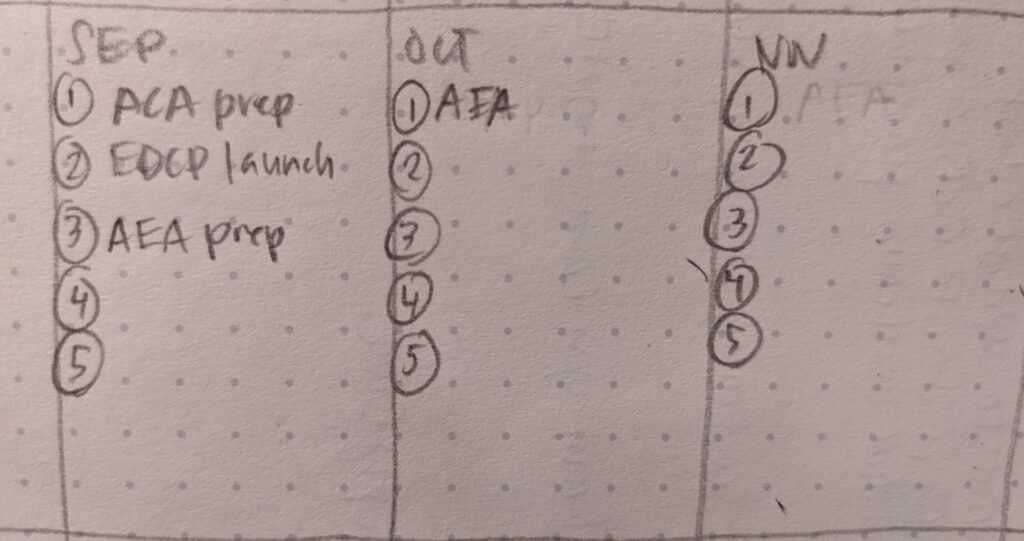
Usually my massive conference is held in November, where I market and network and make new friends and clients and hug all my people. It’s the best.
It’s also a whole project. It typically takes up one spot for November.
But next year they’ve moved it to October.
Which means my prep will happen in September, when I’m getting my talks together and planning the parties I’ll host at the conference. Whew.
September is the same time I’m launching a course and prepping for the launch of another course.
Now I can look at September and recognize, months in advance, that I won’t have much time for paid work. I won’t overbook my September because I can only do 5 things and massive conference prep is definitely one of those things.
This means, if I’m following the 5 projects philosophy, that I have to take on one less paid project in September, in order to plan for one less paid project in October.
Gosh, that conference starts to take on a different sized budget.
Better make sure I’m working my ass off to get the most out of that conference experience.
The holidays take up one spot in December. Not even work-related but it takes up a whole spot. Because the more I thought about this five project limit, the more I realized it isn’t just about work.
Got a fresh baby? That’s one or two spots on every month until your kid is 3.
Dealing with an aging parent? Fill in a spot. Or three.
Old Stephanie would have scoffed a bit at this research. Like “oh yeah the average person can only handle 5 projects, but me? I’m freakin good at this. Bring it on.”
Old Stephanie burned out. Repeatedly.
Health is recognizing the limits of our capacity.
We can put a lot of pressure on ourselves (and each other) to be more, achieve more, ever ever more more. And even if we have wised up to the fact that ever more isn’t sustainable, you’re just left wondering, well, what is?
It’s five.
Now we know.
Ok, ok. One research study isn’t enough to warrant such strong words like knowing something.
But I’m going to run with this framework for a year and see how I feel.
Conversely, some students in Boost and Bloom, who are just starting out on their own, are struggling to juggle more than one project at a time. Like, your brain hyperfocuses on making sure this one project doesn’t go off the rails.
Let this research be an encouragement to diversify your portfolio a little.
Small projects count. The researchers point out that part of the burnout comes from the administrative time and energy to run a project, no matter its size, and the task-switching between projects that sucks your brain.
So for people who only have one project in their laser beam and need to broaden their scope, small projects count.
And for people, like me, who need to rein it in and lower their project number, small projects count.
May we see this restraint as freeing.
In January, my 5 will be:
- A two-day workshop with National Science Foundation
- Dashboard development work with the City of Chicago
- Coordination of a workshop with one of my staff for Centers for Disease Control and Prevention
- Prepping for the re-launch of my one-on-one data viz coaching program, opening in March
- Final prep for re-opening Boost and Bloom (I’m so excited!)
What are your five? Email them to me.




